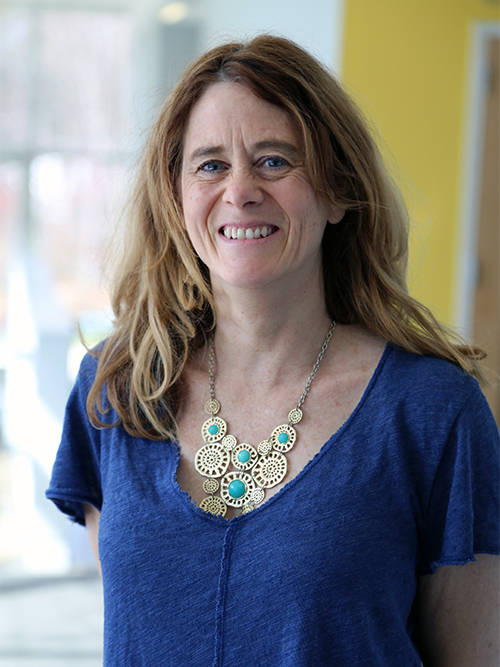
By Bethany Romano, MBA’17
The ongoing crisis of family separation at the U.S.-Mexico border has elevated the national conversation on immigration policy to new emotional heights. Heart-wrenching images of minors removed from their parents and placed in detention camps overwhelm our news outlets and social media feeds—while government officials and pundits offer conflicting information about what’s happening and why.
Professors Susan Eaton and Jessica Santos, PhD’15, co-teach a course at Brandeis University’s Heller School for Social Policy and Management titled “Immigrant Integration in the United States: Policy, Practice and People.” They offer five ways to think critically and better understand U.S. immigration policy in context:
1. The difference between immigrant assimilation and integration is critical.
Santos: Assimilation is the idea that immigrants should adopt the culture of white, mainstream Americans. Integration, on the other hand, is a process whereby everyone in a community changes as a result of demographic change. Demographic shifts like immigration force everyone—both newcomers and longstanding community members—to think differently and work together to create the community they want. That means sharing power, and creating policies and processes together within and outside of government.
Eaton: In our class we do our best to highlight the constructive integration work that is happening on the ground, usually on the local level, not just the divisive, terrible things. But even good examples are also rife with conflict and white supremacy. They never go far enough, they can be critiqued and should be improved—that’s what we want our students to learn.
Santos: For example, In New Hampshire, three philanthropic foundations came together, pooled their resources, and worked with communities across the state to build coalitions and work together on immigrant integration. When done well, integration work can shift power dynamics at the local level and reveal solutions to social issues that benefit all members of a community.
2. Immigration policy is way more dysfunctional at the federal level than at the state and local level.
Eaton: At the federal level, most of the conversation around immigration policy asks two basic questions: Who gets to stay? And who needs to go? Those very simplistic questions lend themselves very easily to ‘othering’ and encourage people to ask a third, more dangerous question: Who is really an American? People have been misled to think that those are the only two important questions about immigration, so at the federal level it’s much easier to justify the kinds of dehumanizing practices we see today.
When you go down to the state and local level, it’s a much more productive, broad, complex and compassionate policy conversation. It’s not just a question of who gets to stay and who has to go; in the best cases it’s a conversation of, “Okay, we’re all here together, how do we figure this out?”
Santos: A lot of integration work is about shifting power dynamics at the local level. People learn more about themselves, and how we have more in common than we think. The Welcoming America initiative, for example, brings people together across difference through social events, potlucks and cultural or artistic events, providing opportunities for community residents to get to know one another. New Americans who have been involved in that integration work say that those spaces are critical for cultural preservation and growth and not feeling pressured to assimilate. True integration work and policy change can’t just happen in white-dominated spaces. In these spaces, native-born Americans learn to listen and learn from newcomers.
3. ‘Othering,’ or the creation of ‘us’ and ‘them,’ is the force behind exclusionary immigration policy
Santos: The process of ‘othering’ is about dehumanizing people and positioning them, because of aspects of their social identity, as the ‘other.’ Recent U.S. policy has been trying to define who is American, othering everyone who does not fit a white, Christian norm, which excludes a large percentage of Americans, making them extremely vulnerable. Mexican and Central American families seeking asylum in our country are currently being targeted and dehumanized—even though seeking asylum is not an illegal action.
Eaton: And crossing the border illegally is a civil infraction, not a criminal one. But it is being criminalized and that is allowed to happen through a process of othering, and framing: a law and order frame. In the law and order frame, there are good people and bad people, there’s good and evil. It’s a very basic, simplistic way to look at the world that’s based on fear. Othering activates fear, and it’s really baked into our immigration policy.
4. History shows us this isn’t new, we are all connected, and that U.S. policy often fuels increased immigration
Eaton: Much of what we’ve seen this week with the separation of families at the southern U.S. border has been horrifying. It’s worse than anything we’ve seen in recent memory, but it’s also in some ways consistent with U.S. history, if you go back to Japanese internment camps, slavery—there’s a whole history of this kind of thing happening.
Santos: One reason that many migrants come to the United States is because our economy has created a demand for undocumented workers, and relies on them. It’s a really complicated relationship with a complicated history, especially for Mexico and other Central American countries. The fact that we’re now criminalizing that activity is inhumane. The U.S. relies on the exploitation of immigrant labor for our economy to function the way it’s currently structured.
Eaton: Everyone talks about the violence, the drug gangs in Guatemala and El Salvador that have forced many to immigrate and seek asylum in the U.S., but the drug market here in the U.S. helped fuel that violence. People don’t choose immigration just because they want to make $11 an hour; often it’s because they’re unsafe, or because their economy or way of life have been eviscerated, in many cases due to U.S. policies and military intervention. We have borders between countries but we’re actually very interconnected.
5. What can you do? So, so much.
Santos: The role that individuals can play in this work is actually incredibly important. There’s a very active community working towards immigrant rights and immigrant integration, though you might not be aware of it. Find out who those people are in your community and join, if you can. Write to your elected officials to tell them to pass more inclusionary, equitable policies. Donate, if you have the resources. Educate yourself about what’s happening, and center the voices of immigrants and women of color in that education. Create relationships in your community with new arrivals, and be a connector. Whether you’re foreign-born or native-born, you may have access to people and resources that you can share. Figure out who you’re opening doors for. If your connections are predominantly with people like you, diversify your networks. Don’t hoard opportunities. Be the person who passes opportunities to people who are excluded. Right now, immigrants are being excluded, really intentionally, from participating in life in this country.
Check out these resources to learn more and get involved:
American Civil Liberties Union
Grantmakers Concerned with Immigrants and Refugees
MIRA (Massachusetts Immigrants and Refugees Advocacy) Coalition
Susan Eaton is a professor of the practice and director of the Sillerman Center for the Advancement of Philanthropy at the Heller School for Social Policy and Management, Brandeis University.
Jessica Harper Santos, PhD’15, is a lecturer and director of community-engaged research at the Institute on Assets and Social Policy at the Heller School for Social Policy and Management, Brandeis University.


